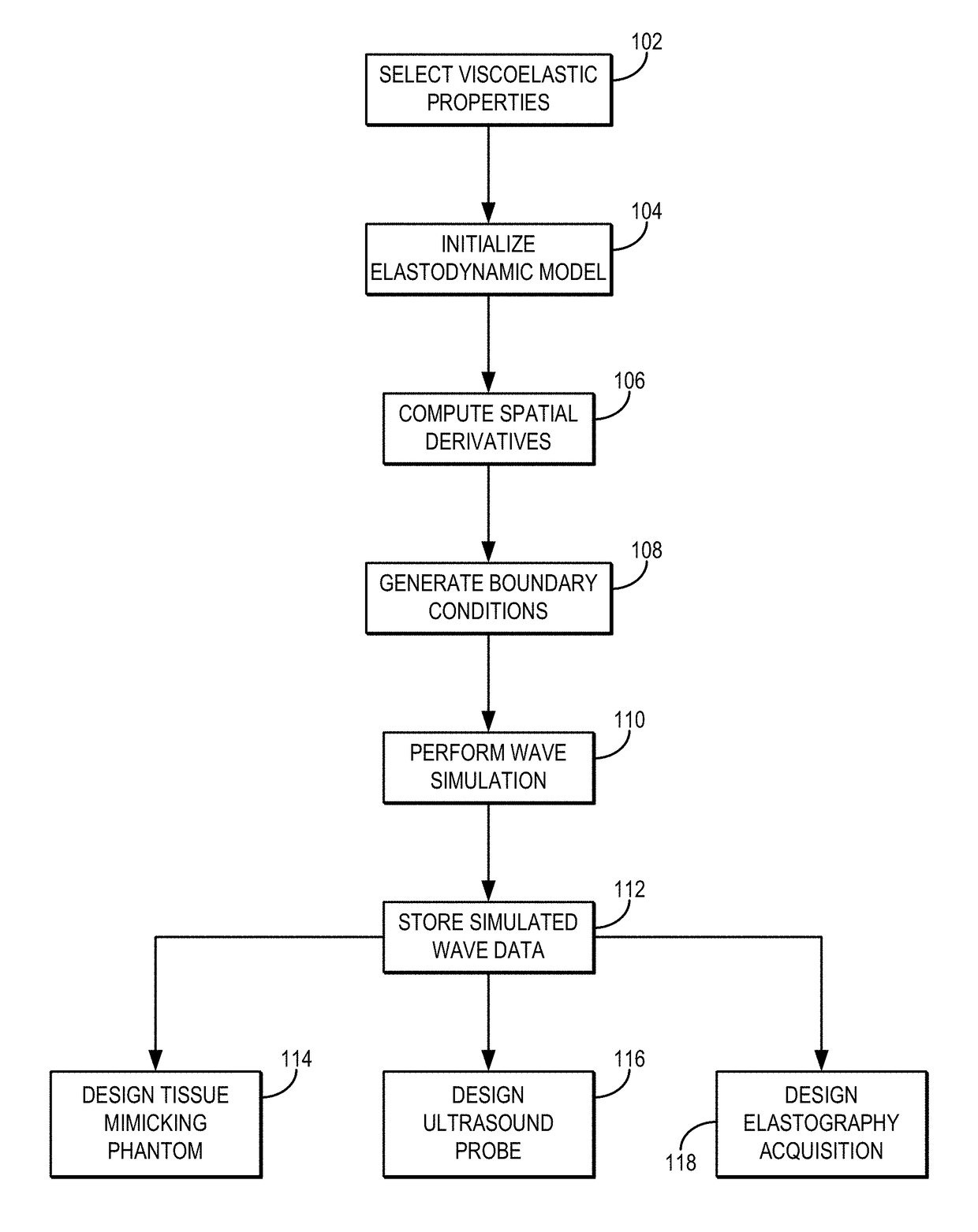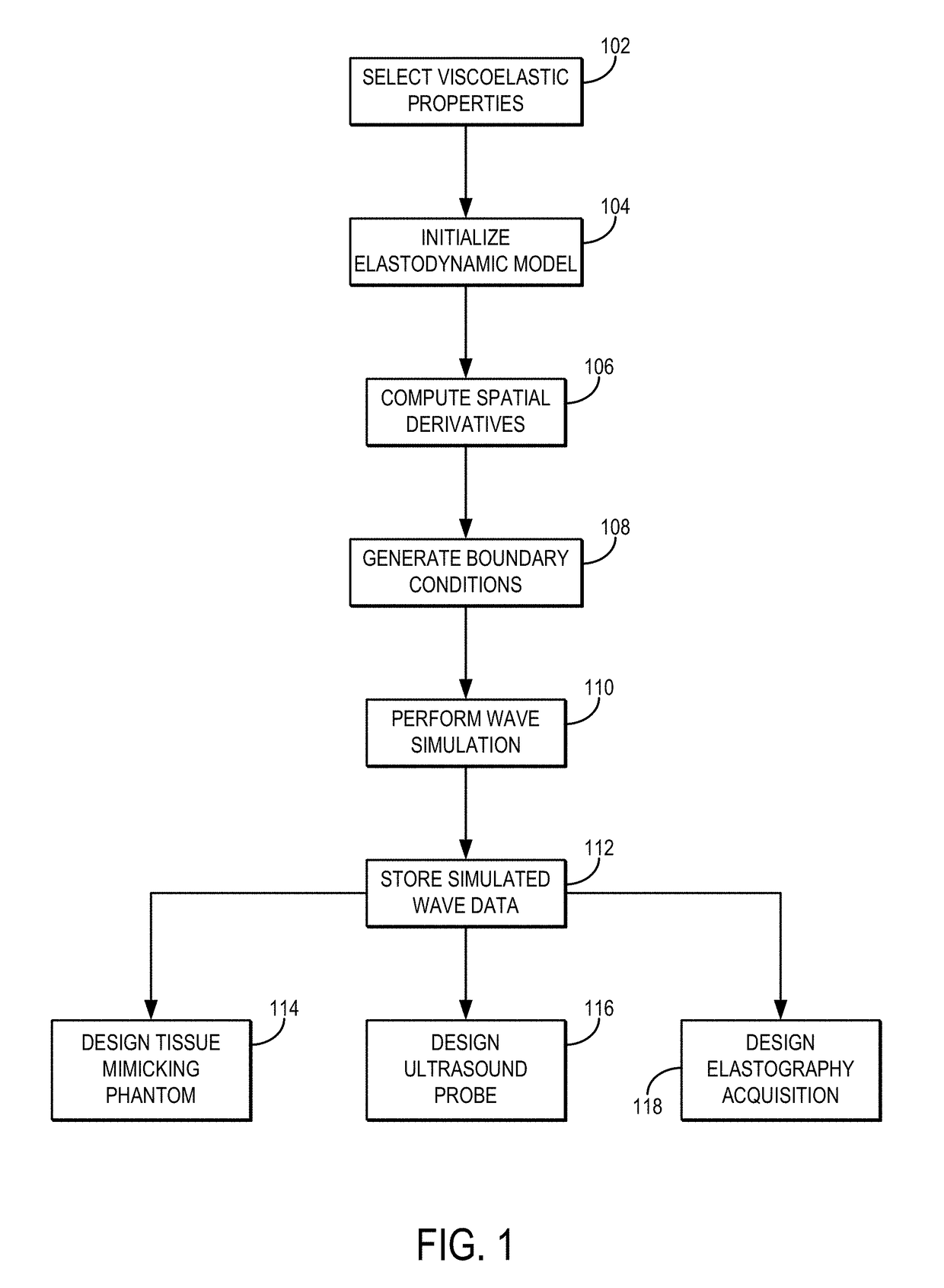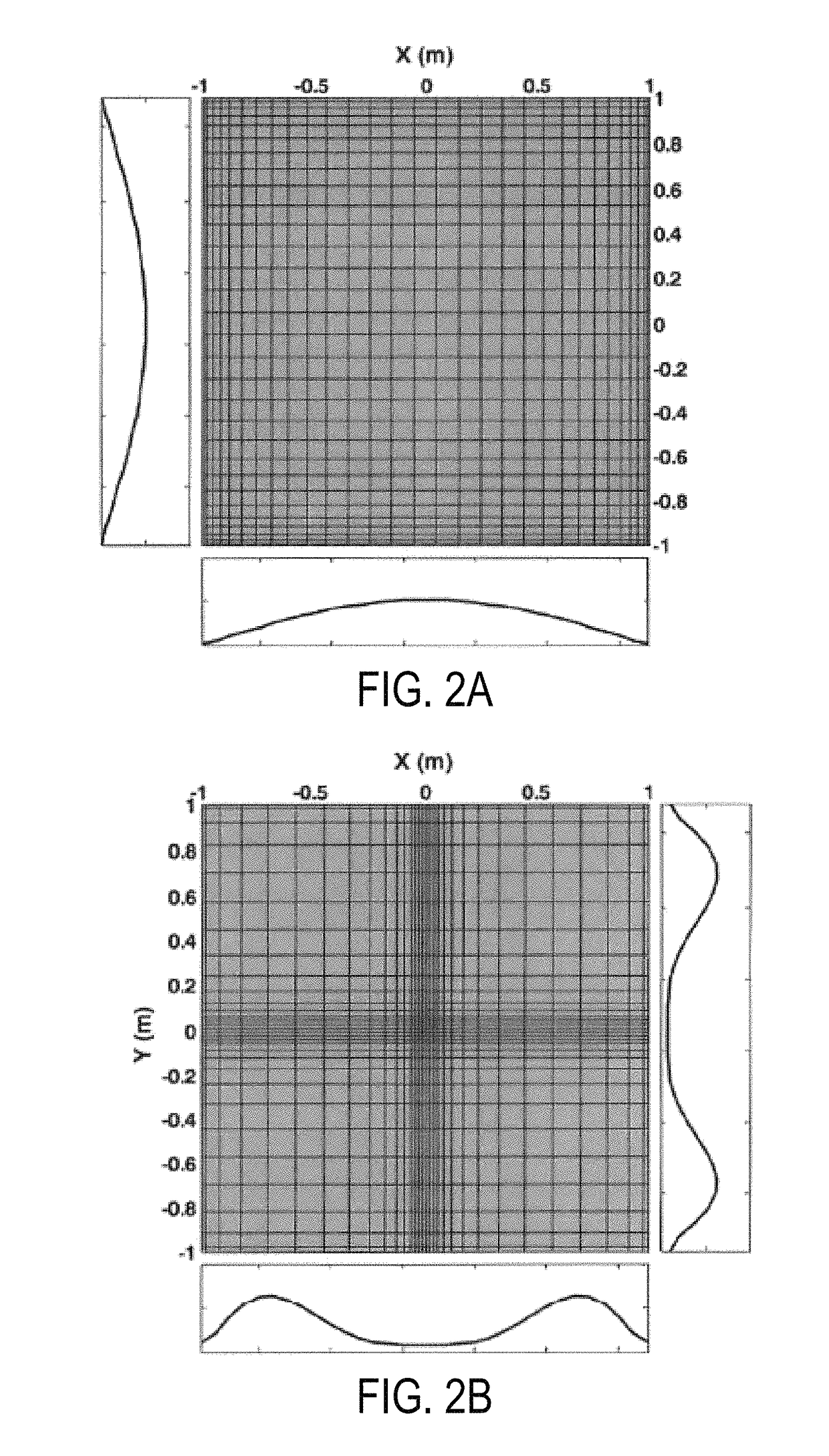Systems and methods for efficiently simulating wave propagation in viscoelastic media
a technology of viscoelastic media and efficient simulation, applied in the direction of instrumentation, design optimisation/simulation, computation using non-denominational number representation, etc., can solve the problem that the wave propagation method is often computationally expensiv
- Summary
- Abstract
- Description
- Claims
- Application Information
AI Technical Summary
Benefits of technology
Problems solved by technology
Method used
Image
Examples
Embodiment Construction
[0011]Described here are systems and methods for simulating wave propagation in viscoelastic media. In these systems and method, an elastodynamic equation is formulated as a velocity-stress relationship. Material viscosity is introduced as memory variables for representing viscous stress rates. Boundary conditions can be can be configured at the borders of the computational domain to minimize reflections. As one example, the boundary conditions can include so-called “perfectly matched layer” (“PML”) boundary conditions, such as convolutional PML (“CPML”) boundary conditions. The spatial domain is discretized, for example using a mapped Chebyshev method. Spatial derivatives can be estimated by a Chebyshev pseudospectral method. The systems and methods use a mixed explicit / implicit method to integrate over time.
[0012]A number of common material types are supported by the systems and methods described here. Example material types include isotropic viscoelastic / elastic materials and tra...
PUM
 Login to View More
Login to View More Abstract
Description
Claims
Application Information
 Login to View More
Login to View More - R&D
- Intellectual Property
- Life Sciences
- Materials
- Tech Scout
- Unparalleled Data Quality
- Higher Quality Content
- 60% Fewer Hallucinations
Browse by: Latest US Patents, China's latest patents, Technical Efficacy Thesaurus, Application Domain, Technology Topic, Popular Technical Reports.
© 2025 PatSnap. All rights reserved.Legal|Privacy policy|Modern Slavery Act Transparency Statement|Sitemap|About US| Contact US: help@patsnap.com



